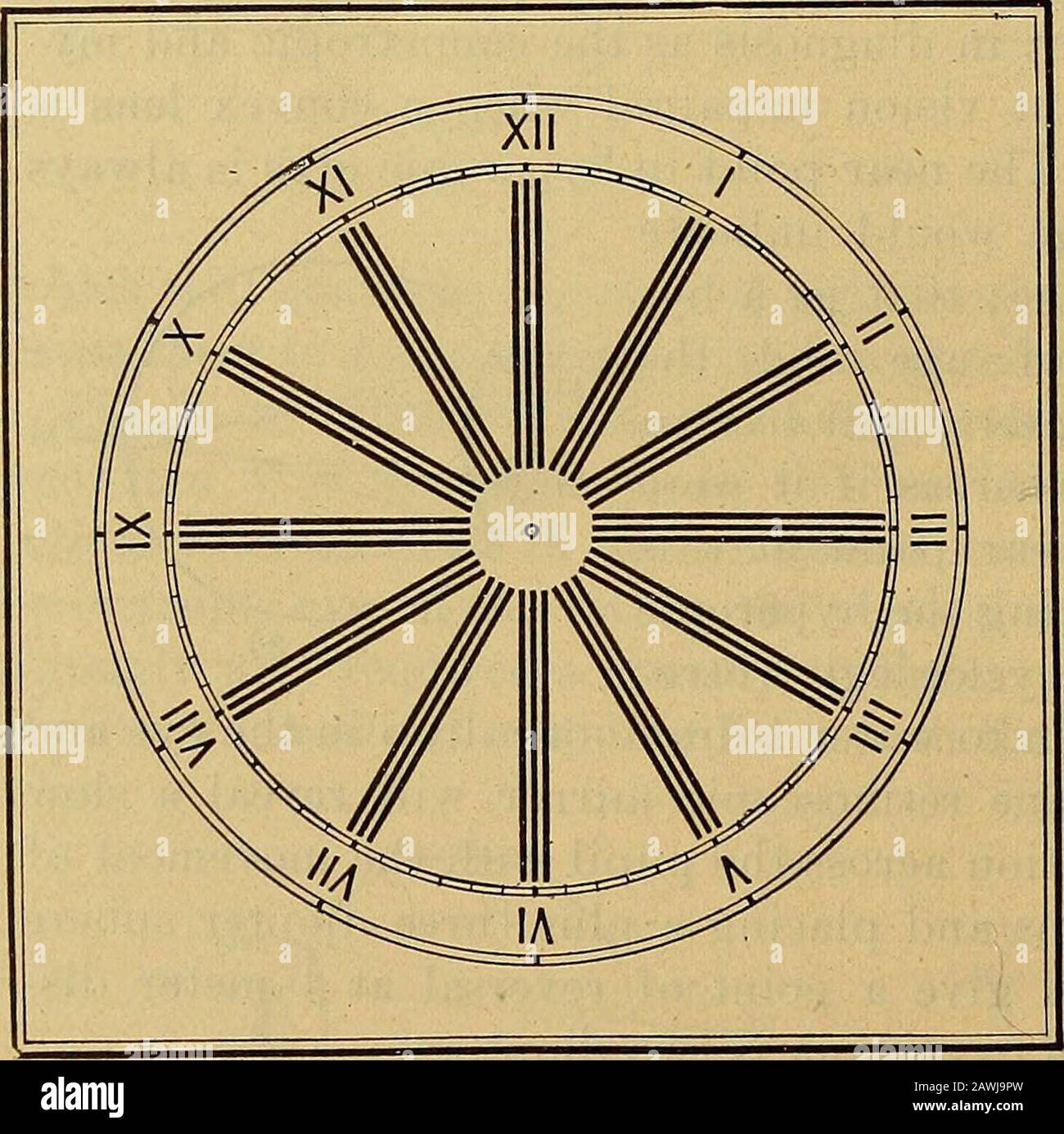Manual of ophthalmology . gmatism.They are: A and R;round letters, O, C, D,G, Q; and square let-ters, H, M, N, W, N;also E and Z; T, Y,and V. The letters Sand B are also con-fused. Another simplemethod o f detectingastigmatism is to causethe eye to look at a so-called astigmatic chart (Fig. 35). This is a series of three equally black lines passing through sixchief meridians, and as these meridians are marked and correspondto the numbers or figures on a clock it has received the name of theclock dial, and the patient readily indicates the lines when so in-formed. An eye that is astigmatic more

Image details
Contributor:
The Reading Room / Alamy Stock PhotoImage ID:
2AWJ9PWFile size:
7.1 MB (382.6 KB Compressed download)Releases:
Model - no | Property - noDo I need a release?Dimensions:
1583 x 1577 px | 26.8 x 26.7 cm | 10.6 x 10.5 inches | 150dpiMore information:
This image is a public domain image, which means either that copyright has expired in the image or the copyright holder has waived their copyright. Alamy charges you a fee for access to the high resolution copy of the image.
This image could have imperfections as it’s either historical or reportage.
Manual of ophthalmology . gmatism.They are: A and R;round letters, O, C, D, G, Q; and square let-ters, H, M, N, W, N;also E and Z; T, Y, and V. The letters Sand B are also con-fused. Another simplemethod o f detectingastigmatism is to causethe eye to look at a so-called astigmatic chart (Fig. 35). This is a series of three equally black lines passing through sixchief meridians, and as these meridians are marked and correspondto the numbers or figures on a clock it has received the name of theclock dial, and the patient readily indicates the lines when so in-formed. An eye that is astigmatic more than half a diopter andhas no axial ametropia will promptly detect which lines on the chartappear darker than all the others; however, if there is axial ame-tropia much greater in amount than the astigmatism, it may benecessary to place a spheric lens before the eye to detect the curva-ture ametropia by this test. Another excellent method of determin-ing the presence of astigmatism is to place a plus or minus one diopter. Fig. 35. REFRACTIVE ERRORS AND THEIR DETECTION. 127 cylinder before the eye as the eye looks at the clock dial chart androtate this cylinder through the various meridians, if the lineswhich appear darker than all others with this cylinder in position, change to the next succeeding series of lines as the cylinder is re-volved, the astigmatic error must be slight or not present. The idealmethod of detecting astigmatism is with the plane mirror retino-scope. If the observer is not an expert with the retinoscope it maybe necessary to have the eye under the effect of a cycloplegic. (SeeDiagnosis of hyperopia.) The presence of astigmatism with themirror is always detected by the appearance of a band of light whichextends across the pupil as the mirror is rotated and the light madeto pass through first one and then the other of the chief meridians. This band of light may occupy any meridian depending upon whichis astigmatic. If the band moves with the movement of the